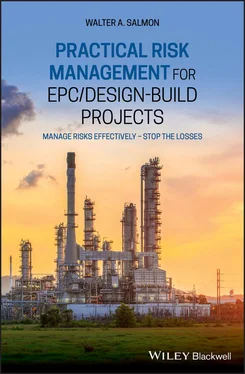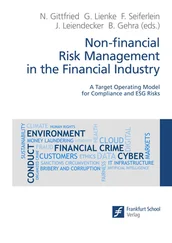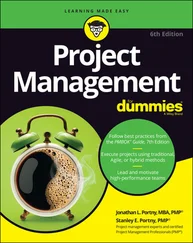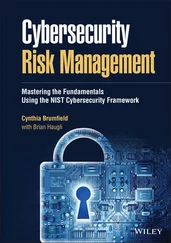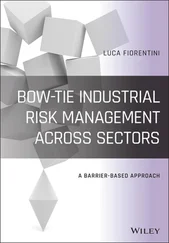The hazard situation for construction Projects will also be subject to change over time. Items that were previously discounted as being of no significance may therefore become elevated to a critical status later. On the other hand, items viewed as being potentially dangerous to people or the Project may not materialise into actual problems. For this reason, it is essential for key personnel to be designated as part of a specialised team (the Risk Assessment Team) made responsible for continuously monitoring the changing risk situation, re-assessing the hazards as the Project progresses, and putting in place effective mechanisms for mitigating the principal perceived risks wherever possible. Brady envisages that the activities of the Risk Assessment Team will include subsequently reviewing the risks after commencement of the implementation work to aid adjusting the controls (i.e. the mitigation measures for the risks) in the light of the knowledge gained. 1
3.3 Importance of Project Risk Management
Even as late as the First Quarter of 2019, those in the Oil and Gas Industry were still facing a tough time getting new work, primarily owing to the lower price of oil that had struck home in 2015. The impact of this fall in price was that profit margins had to be tightened dramatically in order for a bidder to stand a chance of being awarded a new Project from amongst the considerably fewer new ones coming on stream. The contrast between the abundance of mega Projects that existed in 2007 and the dearth of such Projects at the date of completing this book is very evident to those old hands still working in the Middle East since that time. The significant drop in the numbers of expatriates working there compared with years ago is felt everywhere; many of the old haunts that were previously full to overflowing are now quite desolate. However, this situation has perhaps given time for some sober reflection, since it is also widely known that the mega Projects that arose as a result of the previous high oil prices (which reached around USD 120 per barrel in 2014) were not very successful, if not outright failures. 2
In fact, there are two very sobering key factors emerging from the latter referenced document:
1 78% of mega Projects failed in terms of costs and schedule, while two-thirds fell short of production-attainment goals, and
2 half did not achieve at least 50% of the targeted production expected for the first 24 months of their operational lives.
Both of those factors are a clear indication that there has been a failure to manage the risks of mega Projects properly, and that Contractors must start to focus seriously on quality Project Risk Management if their thinner profits are not going to be eroded still further. It is a fact that all construction Projects have objectives at strategic, tactical, and operational levels. 3 For most lump-sum EPC Projects, the responsibility for successfully handling all of those objectives falls to the EPC Contractor (who will also be burdened with severe penalties if any of the primary objectives are not achieved). Anything that could make achieving those objectives uncertain must therefore be considered to be a potential hazard that presents a risk, and which therefore needs to be countered as effectively as possible by the Contractor.
3.4 Corporate Risks Versus Project Risks
When dealing with risks for construction companies, there are two levels of risks to manage:
1 The Corporate RisksThese are the risks related to running the day-to-day business of the Contractor and they are the direct responsibility of the Corporate Management Team (under the auspices of the Board of Directors responsible for managing the company's business). Collectively, these risks extend to taking responsibility for ensuring that all the commercial and contractual provisions included in the proposed contracts for the Projects to be taken on are sound in all respects, particularly in regard to indemnities and liabilities. Those risks are extensive, but they are also not the focus of this book, primarily because the responsibility for handling such issues should fall to specialists in the area of financial and legal matters, and not to the members of the Project Implementation Teams.Sadly, however, it is often management of the corporate risks where Contractors fall down. Too often, therefore, workers have unexpectedly found themselves out of a job due to the incompetence of their Corporate Management Team and/or Board of Directors, and without any financial cushion to tide them over until a new job comes along. Worse still, it is not unknown for Directors to have received bonuses (or have still been expecting them) even as they walked away from the bankruptcy that their incompetence may well have created. 4
2 The Project Implementation RisksThese are the particular risks specific to implementing each of the Projects that the Contractor is handling, and which are predominantly the responsibility of the individual Project Managers and their associated Department Managers to handle. 5 Those are the risks that this book is principally focused on.
So, instead of swamping the Department Managers with information that is more related to corporate risk management concerns, I have concentrated in this book on those risks that each of the Department Managers really does need to concern himself/herself with, especially in regard to what are known as EPC/Design-Build Projects. However, as pointed out earlier, most of the risks related to both Procurement and Construction activities are common to all Projects for construction work, not just EPC/Design-Build Projects.
3.5 Greater Risks for EPC Contractors
The scope of work and the range of responsibilities and risks placed on the Contractor will vary from one EPC Project to the next. EPC Projects of themselves are risky enough for the Contractor, even if they are of the more preferable (from the Contractor's perspective) reimbursable type contracts (where the Contractor is paid for all costs involved in constructing the Project plus an agreed lump-sum or percentage addition to cover overheads and profit). As observed by Watt, ‘Since the cost of the project is reimbursable, the contractor has much less risk associated with cost increases’. 6 However, all too often nowadays, Employers are insisting that the Contract Price is lump-sum in nature and fixed in all respects (i.e. no increase is payable to the Contractor for inflation, fluctuations in currency exchange rates, etc.). This means that every extra cent spent must come out of the Contractor's own pocket, sometimes even if the Employer appears to be the direct cause of the unexpected expenditure.
Some additional items added to the list of responsibilities for the EPC Contractor can increase the magnitude of the risks almost exponentially. Examples are such things as: (i) validation of the Conceptual Design and (ii) the provision of ‘single source’ specialist equipment that is fundamental to the required outputs from the completed facility (such as, for example, the Gas Turbine Generators for a Power Plant Project). There are far more possibilities beyond those limited examples. This situation is aggravated even more where the Contractor is also responsible for meeting the Guaranteed Performance Outputs of single source equipment. I have even worked on a Project where, albeit in a roundabout way, the Employer tried (unsuccessfully) to make the Contractor responsible for the quality of the gas that the Employer was responsible for supplying for fuel purposes, and upon which the required outputs from the facility were highly dependent. Such is the lot of the EPC Contractor, all too often ‘not a happy one’. 7
If the Employer also insists on an unusually short time-frame for completion (with substantial Liquidated Damages payable by the Contractor if the Project is completed late), then truly effective management of the risks involved becomes an absolutely essential task for the Contractor to perform if the Contractor's expected profit is going to have any chance of being achieved. The Employer will inevitably be very strict on adherence to the completion date in the situation where the Employer is liable to pay heavy penalties to any third parties in the event of delayed completion of the Project. That will be especially so where contractual promises have been made by the Employer to other companies relying on the output date from the completed facility to be achieved.
Читать дальше
